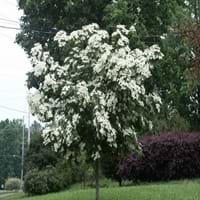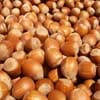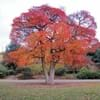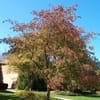Life Span
Perennial
Perennial
Type
Tree
Bulb or Corm or Tuber
Origin
China, Japan, Korea
Mediterranean, Western Asia
Types
Japanese dogwood, Chinese dogwood
Not Available
Number of Varieties
Not Available
Habitat
Dappled Shade, Sunny Edge, Woodland Garden Canopy
Mediterranean region
USDA Hardiness Zone
5-8
4-9
Sunset Zone
2a, 2b, 3a, 3b, 4, 5, 6, 7, 8, 9, 14, 15, 16, 17
21,22
Habit
Spreading
Clump-Forming
Flower Color
White, Green
White, Yellow, Red, Blue, Purple, Pink, Lavender, Violet
Flower Color Modifier
Bicolor
Bicolor
Fruit Color
Red
Not Available
Leaf Color in Spring
Light Green
Green
Leaf Color in Summer
Green
Light Green
Leaf Color in Fall
Red, Purple, Burgundy
Several shades of Green
Leaf Color in Winter
Not Available
Light Green
Leaf Shape
Obtuse
Long slender
Plant Season
Spring, Summer, Fall, Winter
Spring, Winter
Sunlight
Full Sun, Partial Sun, Partial shade
Full Sun, Partial Sun
Growth Rate
Medium
Medium
The pH of Soil
Acidic, Neutral
Acidic, Neutral
Soil Drainage
Well drained
Well drained
Bloom Time
Late Spring, Early Summer
Early Spring, Spring, Late Winter, Indeterminate
Tolerances
Not Available
Black Walnut Toxicity, Rabbit, Shade areas
Where to Plant?
Ground
Container, Ground, Pot
How to Plant?
Seedlings
chipping, Offsets, scooping, Twin scaling, Vegetative
Plant Maintenance
Medium
Low
Watering Requirements
Requires more often in extreme heat, Requires regular watering
Medium
In Summer
Lots of watering
Lots of watering
In Spring
Moderate
Moderate
In Winter
Average Water
Average Water
Soil pH
Acidic, Neutral
Acidic, Neutral
Soil Drainage Capacity
Well drained
Well drained
Sun Exposure
Full Sun, Partial Sun, Partial shade
Full Sun, Partial Sun
Pruning
Remove damaged leaves, Remove dead branches, Remove dead leaves
Remove damaged leaves, Remove dead branches, Remove dead leaves
Fertilizers
Ratio of 12-4-8 or 16-4-8
All-Purpose Liquid Fertilizer, General garden fertilizer, Time release fertilizer
Pests and Diseases
Crown Canker, Leaf spot, Scorch
Pests and diseases free
Plant Tolerance
Drought
Black Walnut Toxicity, Rabbit, Shade areas
Flower Petal Number
Single
Single, Double, Semi-Double
Foliage Texture
Medium
Medium
Foliage Sheen
Glossy
Glossy
Allergy
Mild Allergen
Asthma
Aesthetic Uses
Bonsai, Ornamental use
Beautification, Bouquets, Cottage Garden, Landscape Designing, Showy Purposes
Beauty Benefits
Not Available
Not Available
Environmental Uses
Air purification
Not Available
Medicinal Uses
Diarrhea, Dysentry, Eczema
Not Available
Part of Plant Used
Fruits, Leaves
Flowers
Other Uses
Used as favourite late summer fruits, Used for mallets
Decoration Purposes, Showy Purposes
Used As Indoor Plant
Yes
Yes
Used As Outdoor Plant
Yes
Yes
Garden Design
Feature Plant, Shade Trees
Bedding Plant, Container, Cutflower, Mixed Border, Rock Garden / Wall
Botanical Name
CORNUS kousa
Hyacinthus orientalis
Common Name
Chinese Dogwood, Korean Dogwood
Hyacinth, common hyacinth, garden hyacinth, dutch hyacinth
In Hindi
Chinese Dogwood
ह्यचीन्थ
In German
Chinese Dogwood
Hyazinthe
In French
Dogwood chinoise
jacinthe
In Spanish
Dogwood chino
jacinto
In Greek
κινεζική Dogwood
υάκινθος
In Portuguese
Dogwood chinês
jacinto
In Polish
Chiński Dereń
hiacynt
In Latin
Dogwood Chinese
et hyacinthinas,
Phylum
Magnoliophyta
Magnoliophyta
Class
Magnoliopsida
Liliopsida
Family
Cornaceae
Liliaceae
Clade
Angiosperms, Asterids, Eudicots
Angiosperms, Monocots
Tribe
Not Available
Not Available
Subfamily
Cornoideae
Scilloideae
Number of Species
Not Available
Season and Care of Chinese Dogwood and Hyacinth
Season and care of Chinese Dogwood and Hyacinth is important to know. While considering everything about Chinese Dogwood and Hyacinth Care, growing season is an essential factor. Chinese Dogwood season is Spring, Summer, Fall and Winter and Hyacinth season is Spring, Summer, Fall and Winter. The type of soil for Chinese Dogwood is Loam and for Hyacinth is Loam while the PH of soil for Chinese Dogwood is Acidic, Neutral and for Hyacinth is Acidic, Neutral.
Chinese Dogwood and Hyacinth Physical Information
Chinese Dogwood and Hyacinth physical information is very important for comparison. Chinese Dogwood height is 610.00 cm and width 610.00 cm whereas Hyacinth height is 10.20 cm and width 5.10 cm. The color specification of Chinese Dogwood and Hyacinth are as follows:
Chinese Dogwood flower color: White and Green
Chinese Dogwood leaf color: Light Green
Hyacinth flower color: White, Yellow, Red, Blue, Purple, Pink, Lavender and Violet
- Hyacinth leaf color: Green
Care of Chinese Dogwood and Hyacinth
Care of Chinese Dogwood and Hyacinth include pruning, fertilizers, watering etc. Chinese Dogwood pruning is done Remove damaged leaves, Remove dead branches and Remove dead leaves and Hyacinth pruning is done Remove damaged leaves, Remove dead branches and Remove dead leaves. In summer Chinese Dogwood needs Lots of watering and in winter, it needs Average Water. Whereas, in summer Hyacinth needs Lots of watering and in winter, it needs Average Water.





